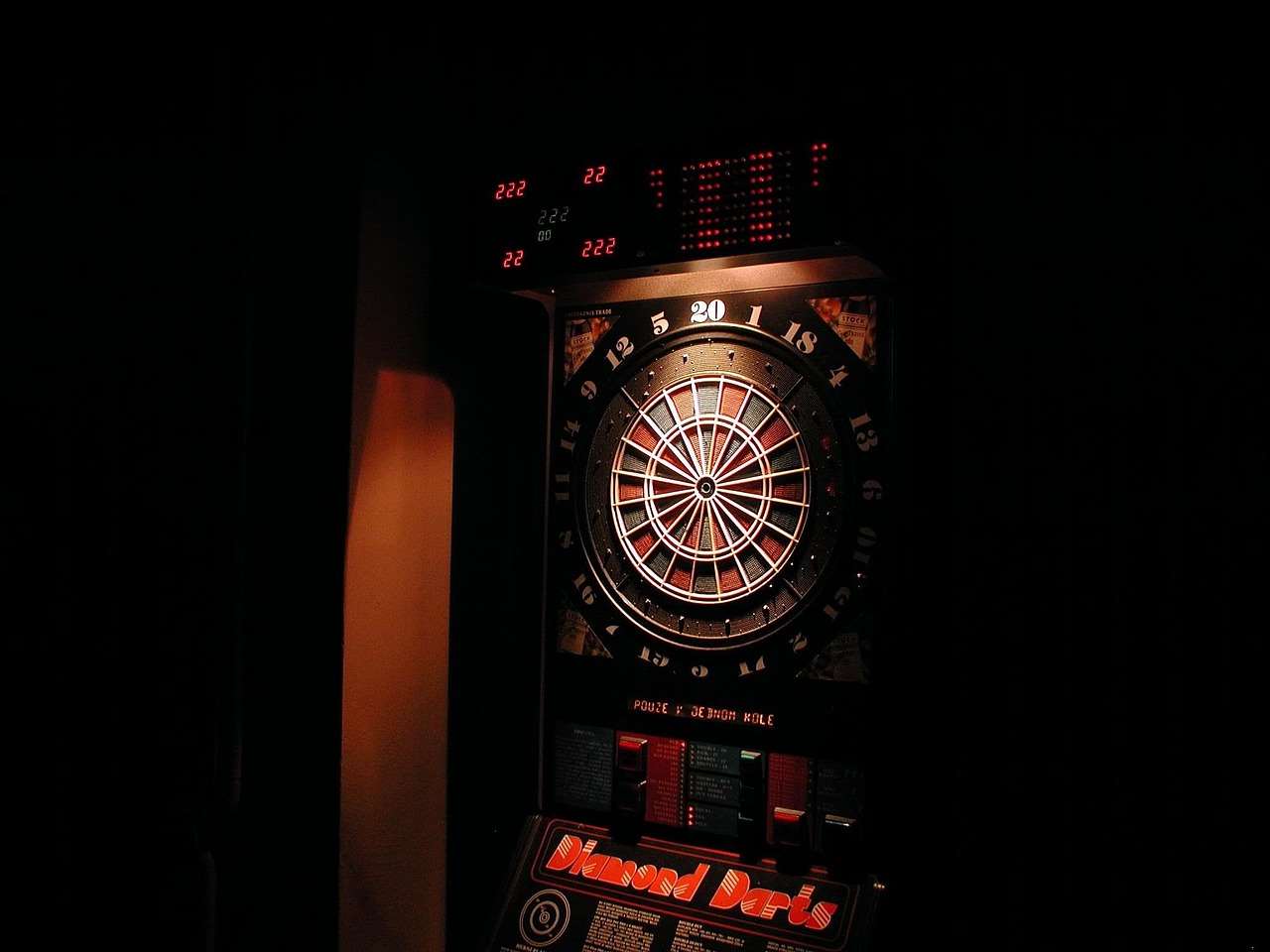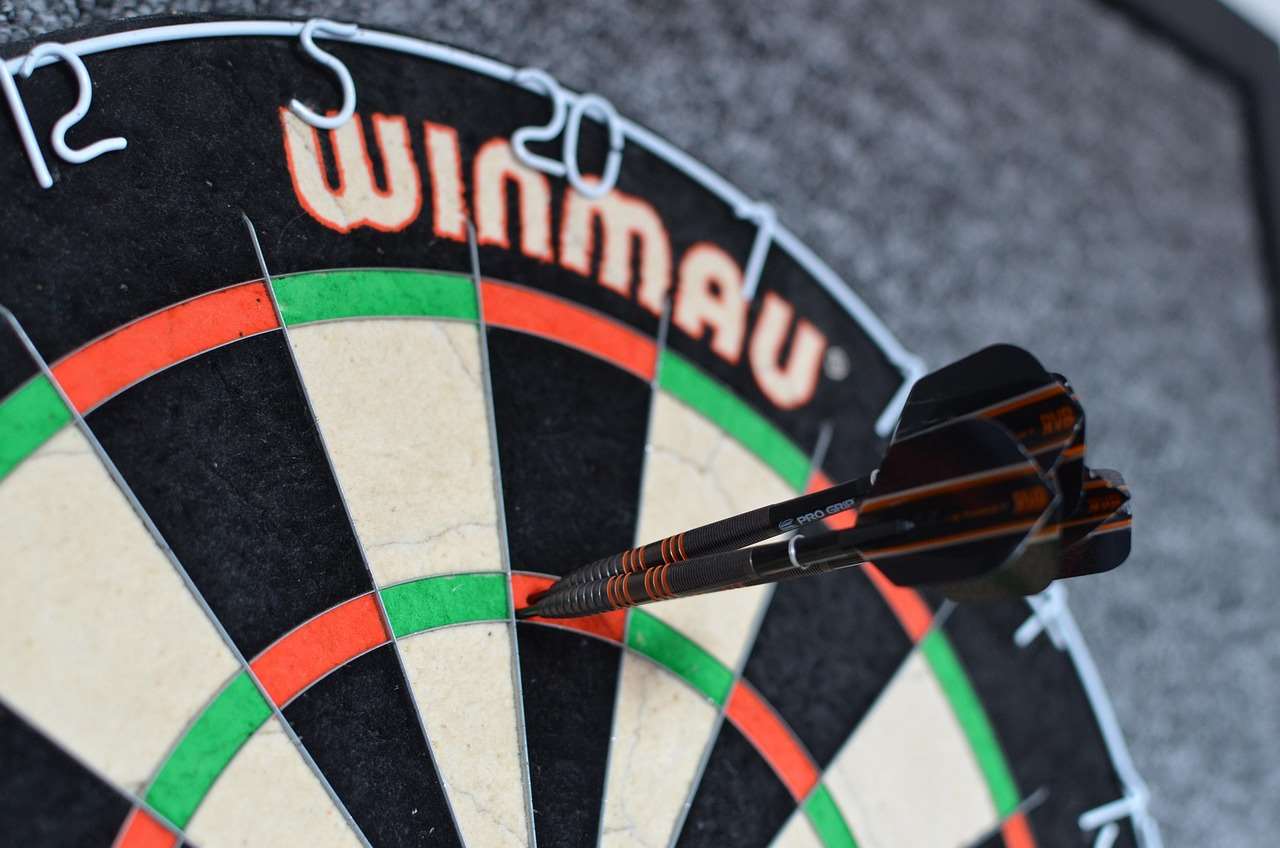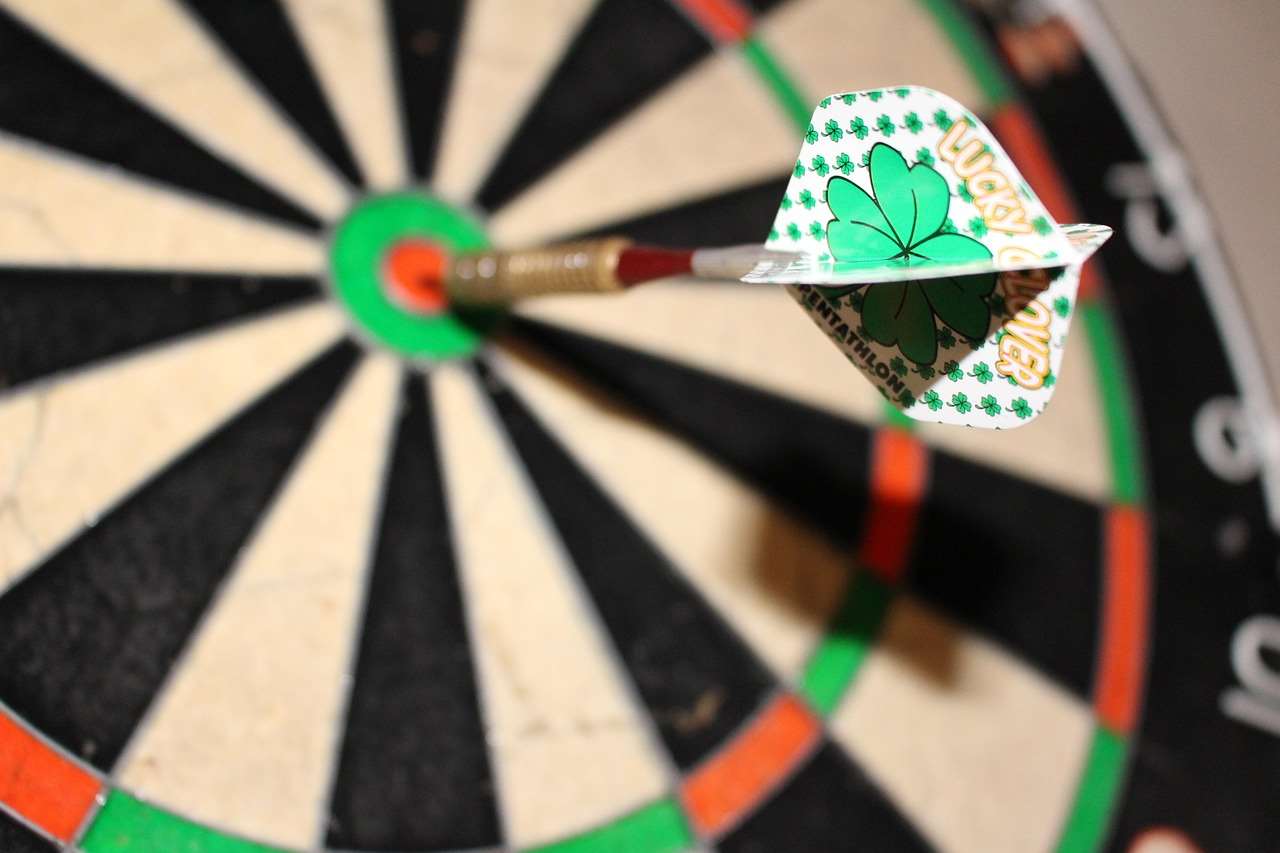Effectively keeping score in Cricket darts is crucial for accurately tracking progress and determining the winner; it mainly involves marking numbers hit (15-20 and bullseye) for both opening and closing. This article will delve into various Cricket darts scorekeeping methods, from traditional chalkboard systems to modern electronic solutions, and discuss strategies for efficient tracking.
⚠️ Still Using Pen & Paper (or a Chalkboard)?! ⚠️
Step into the future! The Dart Counter App handles all the scoring, suggests checkouts, and tracks your stats automatically. It's easier than you think!
Try the Smart Dart Counter App FREE!Ready for an upgrade? Click above!
Understanding the Basics of Cricket Darts Scorekeeping
Cricket is a popular darts game that focuses on hitting specific numbers rather than accumulating a high score. Unlike games like ’01, the objective in Cricket is to “close” numbers and have a lower score than your opponent when all required numbers have been closed. To understand Cricket darts scorekeeping methods, you must first grasp the fundamental principles of the game.
- The Numbers: The numbers in play are 15, 16, 17, 18, 19, 20, and the bullseye.
- Opening and Closing: To “open” a number, you must hit it three times. These can be single, double, or triple hits. Once opened, you score points each time you hit that number until your opponent closes it. To “close” a number, you must hit it three times after it has been opened (either by you or your opponent). If your opponent hasn’t opened the number, hitting it will open it for you, and subsequent hits will score points.
- Winning the Game: The first player to close all required numbers and have a lower (or equal) score than their opponent wins the game.
Understanding these rules is paramount before exploring different methods of keeping score. Accurate scoring ensures fair play and prevents disputes during the game. Let’s explore some of the most common and effective Cricket darts scorekeeping methods.

Traditional Cricket Darts Scorekeeping Methods
Before the advent of electronic scoreboards, players relied on traditional methods to track their progress. These methods, while simple, are still widely used and offer a tactile, engaging experience.
Chalkboard Scoring
The most common traditional method involves using a chalkboard or whiteboard. Here’s how it works:
- Setting Up the Board: Write the numbers 15 through 20 and the bullseye down the center of the board. Leave space on either side of each number for marking hits.
- Marking Hits: Each time a player hits a number, mark it with a slash (/). The first slash represents one hit, the second represents two, and the third represents three, effectively opening the number. Once the number is opened, subsequent hits are tallied as points for that player if the opponent hasn’t closed the number. Additional tallies beyond the initial three opening hits represent the score accumulated for that number.
- Closing the Number: Once a number has three marks after it has been opened, it is considered closed for that player. You can signify this by drawing a circle around the slashes or writing an “X” over the number.
- Tracking Scores: Maintain a running total of each player’s score (points accumulated on open numbers) at the bottom of the board.
Pros: Simple, inexpensive, and requires no electricity. Easy to understand and visually clear.
Cons: Can be messy, requires manual calculation of scores, and is prone to human error. Difficult to track complex scenarios with multiple scoring opportunities.
Paper and Pencil Scoring
Similar to chalkboard scoring, this method uses paper and pencil to record hits and scores. The setup and marking process are identical, but instead of writing on a board, you use a sheet of paper. This is a portable method, suitable when a chalkboard isn’t available.
Pros: Portable, inexpensive, and readily available. Can be more organized than chalkboard scoring.
Cons: Still requires manual calculations, prone to errors, and may be difficult to read if handwriting is poor. Requires carrying paper and pencils.
Modern Cricket Darts Scorekeeping Methods
With technological advancements, several modern Cricket darts scorekeeping methods have emerged, offering increased accuracy, convenience, and features.
Electronic Dartboards with Scoring
Electronic dartboards with built-in scoring are a popular choice for many players. These boards automatically detect where the dart lands and calculate the score accordingly. These can be a great tool for Darts for mixed ability groups as the technology can sometimes aid in reducing scoring errors.
How it Works:
- The board uses sensors to detect the position of the dart.
- It automatically calculates the score and displays it on a digital screen.
- Many boards have pre-programmed games, including Cricket, and handle all the scoring and tracking automatically.
- Some boards even offer features like handicap settings and player statistics.
Pros: Highly accurate, automatic scoring eliminates manual calculations, various game modes, and keeps track of player statistics.
Cons: More expensive than traditional methods, requires electricity, and may have a learning curve.

Mobile Apps and Software
Numerous mobile apps and software programs are designed specifically for Cricket darts scorekeeping. These apps offer a range of features, including:
- Automated Scoring: Enter the dart hits, and the app calculates the score automatically.
- Game Tracking: Track the progress of each game, including turns, scores, and averages.
- Player Statistics: Maintain a record of player performance over time, including win/loss ratios, averages, and high scores.
- Customizable Settings: Adjust the game rules, handicap settings, and other preferences.
- Multiplayer Support: Allow multiple players to participate and track their scores simultaneously.
Popular apps include DartConnect, Pro Darts Scorer, and My Dart Training. Some apps even offer online multiplayer functionality, allowing you to play against opponents worldwide. When Adapting darts games skills, tracking stats on an app can assist in evaluating progress.
Pros: Convenient, portable, feature-rich, and offers detailed statistics and analysis. Many apps are free or low-cost.
Cons: Requires a smartphone or tablet, may be distracting to some players, and relies on accurate data entry.
Tips for Efficient Cricket Darts Scorekeeping
Whether you’re using a traditional or modern method, here are some tips for efficient and accurate Cricket darts scorekeeping:
- Assign a Scorer: Designate one person as the official scorer to minimize confusion and ensure consistency.
- Verify Scores: Before moving on to the next turn, confirm the score with both players to prevent disagreements.
- Use Clear Markings: If using a chalkboard or paper, use clear and legible markings to avoid misinterpretation.
- Double-Check Calculations: If calculating scores manually, double-check your math to ensure accuracy.
- Take Breaks: If playing for an extended period, take short breaks to maintain focus and avoid errors.
- Utilize Technology: Consider using electronic dartboards or mobile apps for automated scoring and tracking.
Implementing these tips can improve the overall experience and accuracy of Cricket darts scorekeeping. Proper scorekeeping is integral to making darts games fair players.
Choosing the Right Cricket Darts Scorekeeping Method
The best Cricket darts scorekeeping method depends on your individual preferences, budget, and playing environment. Consider the following factors when making your decision:
- Budget: Chalkboards and paper are the most affordable options, while electronic dartboards and premium apps can be more expensive.
- Convenience: Electronic dartboards and mobile apps offer the greatest convenience, automating the scoring process and providing detailed statistics.
- Accuracy: Electronic methods are generally more accurate than manual methods, reducing the risk of human error.
- Portability: Paper and pencil scoring is the most portable option, suitable for playing in various locations. Mobile apps also offer good portability.
- Personal Preference: Some players prefer the tactile experience of traditional methods, while others appreciate the convenience and features of modern technology.
Experiment with different methods to find the one that best suits your needs. Ultimately, the goal is to choose a method that allows you to focus on the game and enjoy the competition. Think about the Darts Variants Fun Games you play most frequently.

Addressing Common Scorekeeping Challenges in Cricket Darts
Even with the best Cricket darts scorekeeping methods, certain challenges can arise during a game. Here are some common issues and how to address them:
- Disputes Over Scores: If players disagree on the score, review the markings or data entries together. If necessary, consult a third-party to mediate the dispute.
- Misinterpretation of Markings: Ensure that markings are clear and unambiguous to avoid confusion. Use a consistent system for marking hits and closures.
- Errors in Calculation: If using manual calculations, double-check your math and ask another player to verify your results.
- Distractions: Minimize distractions during scoring to maintain focus and accuracy. Assign a dedicated scorer who is not actively playing.
Addressing these challenges proactively can prevent disputes and ensure a fair and enjoyable game for all participants.
Advanced Strategies in Cricket Darts and Scorekeeping
Beyond the basic Cricket darts scorekeeping methods, some advanced strategies can help improve your game and scoring efficiency.
- Targeting Strategy: Focus on opening and closing key numbers strategically to maximize your scoring opportunities and limit your opponent’s.
- Defensive Play: Close numbers that your opponent has opened to prevent them from scoring points.
- Score Optimization: Aim for doubles and triples to close numbers quickly and efficiently.
- Handicap Adjustments: Implement a handicap system fun dart games to even the playing field and make the game more competitive.
Mastering these strategies can give you a competitive edge and improve your overall performance in Cricket darts.

The Future of Cricket Darts Scorekeeping
The future of Cricket darts scorekeeping methods is likely to be driven by technological advancements. We can expect to see more sophisticated electronic dartboards, mobile apps, and software programs that offer even greater accuracy, convenience, and features.
Some potential developments include:
- AI-Powered Scoring: Artificial intelligence could be used to automatically analyze dart trajectories and predict scores with even greater accuracy.
- Augmented Reality Integration: Augmented reality could overlay scoring information directly onto the dartboard, providing a visually immersive experience.
- Cloud-Based Platforms: Cloud-based platforms could allow players to track their progress, compete against others online, and participate in virtual tournaments.
These advancements promise to make Cricket darts scorekeeping even more seamless and engaging in the years to come. The ease of scoring can impact scaling dart game difficulty for amateur players.

Conclusion: Mastering Cricket Darts Scorekeeping
In conclusion, mastering Cricket darts scorekeeping methods is essential for enjoying and competing in the game. Whether you prefer the simplicity of a chalkboard or the sophistication of an electronic dartboard, understanding the principles of scoring and implementing efficient tracking strategies is crucial for success. By choosing the right method, utilizing helpful tips, and addressing common challenges, you can ensure a fair, accurate, and enjoyable Cricket darts experience. Now that you understand the different methods, grab your darts, pick your preferred scorekeeping system, and start playing!
Hi, I’m Dieter, and I created Dartcounter (Dartcounterapp.com). My motivation wasn’t being a darts expert – quite the opposite! When I first started playing, I loved the game but found keeping accurate scores and tracking stats difficult and distracting.
I figured I couldn’t be the only one struggling with this. So, I decided to build a solution: an easy-to-use application that everyone, no matter their experience level, could use to manage scoring effortlessly.
My goal for Dartcounter was simple: let the app handle the numbers – the scoring, the averages, the stats, even checkout suggestions – so players could focus purely on their throw and enjoying the game. It began as a way to solve my own beginner’s problem, and I’m thrilled it has grown into a helpful tool for the wider darts community.